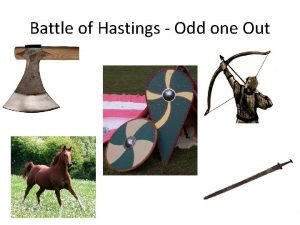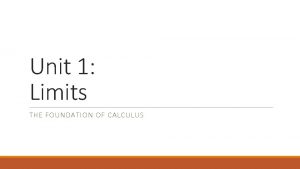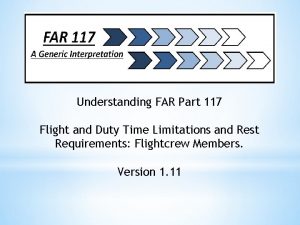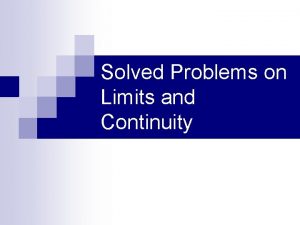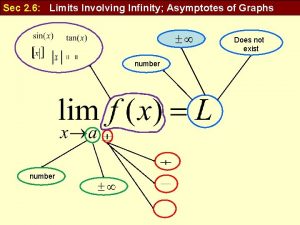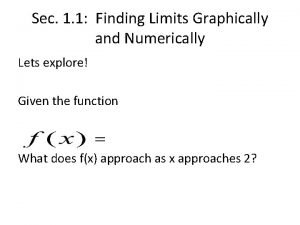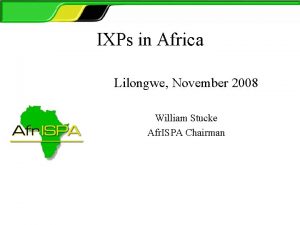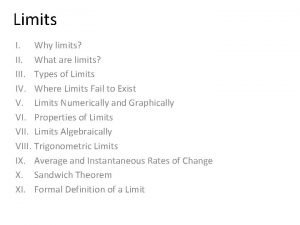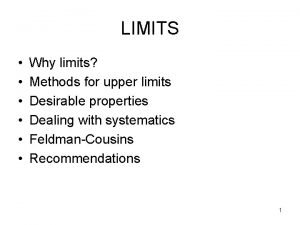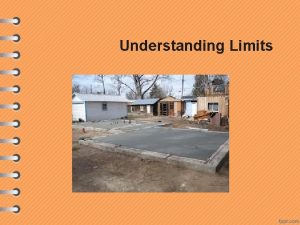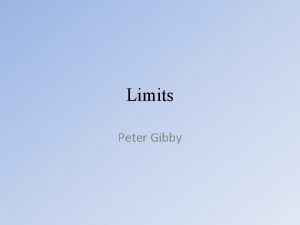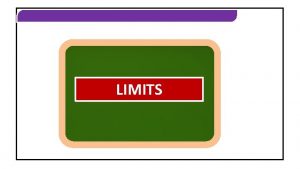Why do we have EIRP Limits William Stucke





















- Slides: 21

Why do we have EIRP Limits? William Stucke FWTF V 12 th May 2016 Century City, Cape Town

What is EIRP? Effective (or Equivalent) Isotropic Radiated Power Conceptually, consider an antenna as a point source

Calculating EIRP Simple equation: EIRP = Transmitted Power – Cable Losses + Antenna Gain Measured in d. Bm or d. BW 1 d. BW = 30 d. Bm Antenna gain measured in d. Bi

Dipole Antenna Zin = 73 + j 42. 5 Ω At Length = 0. 48 λ, Zin = 70 Ω

Antenna Gain Antenna gain is calculated as compared to a theoretical spherical radiation pattern A simple dipole antenna flattens the sphere into a doughnut and may give a gain of up to about 8 d. Bi

Dipole antenna

Dipole antenna

Yagi-Uda Antenna Invented in 1928, but only translated into English much later Gives a gain of up to 20 d. Bi Can receive weaker signals Simple construction – made of metal rods Highly directional Reduces sensitivity to interference

Yagi-Uda Antenna

Yagi-Uda Antenna Reflectors - longer than driven element = Inductive Directors - shorter than driven element = Capacitive

Yagi-Uda Antenna

Idealised Coverage Omni Antenna Sector Antenna

Real Coverage Example

Real Coverage Example 2

Why Specify EIRP Limits? A simple and robust method of limiting transmitted power Important in terms of reducing interference, especially for Pt. MP, as it reduces the effective range Easy to set, easy to define, easy to measure Not always appropriate for Pt. P uses

Licence-Exempt Bands Band Type Limit Comment 2400 – 2483. 5 MHz WLAN 100 m. W 20 d. Bm EIRP 5470 – 5725 MHz WAS & RLAN 1 W 30 d. Bm EIRP Pt. MP 5725 – 5850 MHz WAS & RLAN 4 W EIRP 1 W Tx power Tx output spectral density < 8 d. Bm in any 3 k. Hz band. 5725 – 5850 MHz BFWA 200 W EIRP 1 W Tx power Tx output spectral density < 8 d. Bm in any 3 k. Hz band. 17. 1 – 17. 3 GHz Hiper. LAN 100 m. W EIRP

Licence-Exempt Bands Band Type 24. 00 – 24. 25 GHz SRD 57. 00 – 64 GHz Pt. P 55 d. Bm EIRP ICASA revising – V Band 57. 00 – 66 GHz MGWS 40 d. Bm ICASA revising 71 -76 GHz and 81 -86 GHz Limit Comment Not approved by ICASA for Pt. P or Pt. MP E Band - Pt. P

A little History FCC use “Part 15” to regulate these bands Recently reduced EIRP limits in the 5 GHz band ICASA revising V & E bands

High Gain Antenna Pt. P Link 19 Red Antenna points beam at Blue antenna points back. High gain means that: Better reception at a distance, without higher transmitted power Good rejection of incident signals from other directions

Many Pt. P Links 20

What do we need to change? EIRP limitations on Pt. P links – to allow more directional antennas Longer range Better directionality Better interference resistance Less interference caused Introduce dynamic spectrum assignment – White Spaces
 Horizontal
Horizontal Real limits
Real limits Speech success criteria
Speech success criteria Hey hey bye bye
Hey hey bye bye 6 faces 8 vertices and 12 edges
6 faces 8 vertices and 12 edges Dont ask
Dont ask What did george calvert and william penn have in common
What did george calvert and william penn have in common Why william won the battle of hastings essay
Why william won the battle of hastings essay Why did william win the battle of hastings?
Why did william win the battle of hastings? English renaissance
English renaissance Poet of avon
Poet of avon Why did william win
Why did william win Dts expert 500 gate motor manual
Dts expert 500 gate motor manual Limit rules
Limit rules Far part 117 table b
Far part 117 table b The limits of quantum computers
The limits of quantum computers Limit and continuity solved problems
Limit and continuity solved problems Sec infinity
Sec infinity Finding limits graphically and numerically
Finding limits graphically and numerically Royal london medical underwriting limits
Royal london medical underwriting limits How to calculate control limits
How to calculate control limits Compendial testing definition
Compendial testing definition








